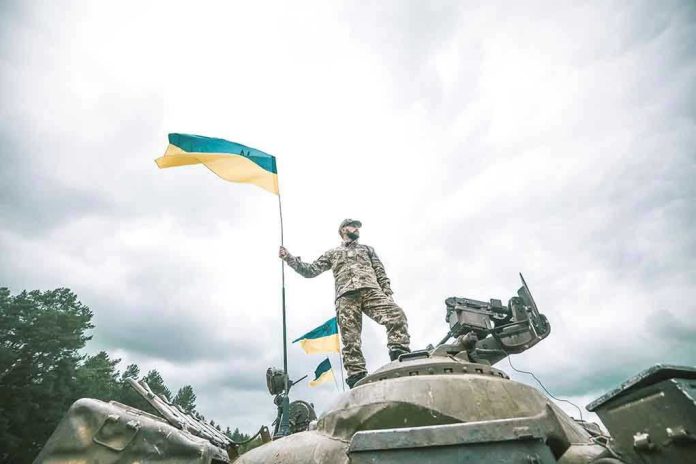
Russia claims it has captured two more Ukrainian villages, raising big questions about whether the front lines are shifting for good—and what it means for a war that just won’t end.
At a Glance
- Russian Ministry of Defense announces capture of Zelenyi Hai (Donetsk) and Maliivka (Dnipropetrovsk)
- Ukraine confirms heavy fighting, casualties, and missile strikes; loss of Maliivka remains unconfirmed
- Russian advances mark first reported ground gains in Dnipropetrovsk region, a major Ukrainian industrial hub
- International analysts warn of humanitarian crises and possible shift in regional power if advances stick
Russian Forces Push Into Ukrainian Heartland Amid Brutal Fighting
The Russian Ministry of Defense declared on June 1st that it had seized Zelenyi Hai in Donetsk and, for the first time, ground in Maliivka, Dnipropetrovsk. Why does this matter? Dnipropetrovsk isn’t just another patch of dirt—it’s a vital industrial and logistics artery for Ukraine. If Russia consolidates these gains, the consequences for Kyiv and the entire region could be catastrophic. The front hasn’t been this fluid in months, and the stakes are only rising.
Ukrainian officials, meanwhile, report hellish combat and admit to suffering losses, including in a major missile attack near Dnipro that led to a top commander resigning. Yet, Kyiv refuses to confirm the loss of Maliivka, underscoring just how chaotic—and uncertain—the situation is. No surprise: when the fog of war is this thick, propagandists and spin doctors have a field day. What’s clear is that the civilians in these contested villages are paying the highest price, facing displacement and shattered lives as the fighting grinds on.
Shifting Front Lines and Escalating Risks for Ukraine
For months, Russia has been throwing everything but the kitchen sink at Ukraine’s defenses in Donetsk, but now, by pushing into Dnipropetrovsk, they’re opening a whole new can of worms. This region hadn’t seen direct ground combat before; now, it could become the next big battleground. The Council on Foreign Relations and military experts agree: if Russia entrenches itself here, Ukraine’s logistics and industry could suffer devastating blows, and the war could lurch in Moscow’s favor.
Ukraine’s counterattacks have grown desperate, with drone strikes and sabotage missions targeting Russian logistics. But Russia’s manpower and firepower in the east remain overwhelming, even if their own logistics and morale are stretched thin. Civilians, as always, are caught in the middle, forced to flee, hide, or just hope they aren’t the next casualty of this endless war. Ukrainian society is feeling the squeeze, with war fatigue, economic strain, and mounting pressure on Zelenskyy’s government to deliver results—or at least stop the bleeding.
Military, Humanitarian, and Political Fallout Looms Large
The short-term fallout is brutal: Ukrainian defensive lines are under threat, reserves may have to redeploy, and more civilians will likely be uprooted. The longer-term danger is even worse: if Russia holds onto its new gains, Kyiv’s supply routes and ability to defend the heartland could be crippled. That would send shockwaves not just through Ukraine, but across the West, where leaders are already debating how much more aid and support they can afford to send.
Economic impacts are already being felt—agriculture and industry in these regions are disrupted, and the cost of relief and reconstruction is skyrocketing. Socially, communities are being torn apart, and politically, Zelenskyy’s team faces growing skepticism at home and abroad. Meanwhile, Putin is doubling down on his narrative of inevitable victory, pointing to these advances as proof that his war machine is rolling forward. Western analysts and humanitarian groups are sounding alarms about a new wave of displacement and the urgent need for more assistance, even as the battlefield grows more unpredictable by the day.
Sources:
Council on Foreign Relations: War in Ukraine Global Conflict Tracker
Cairn University: Russian invasion of Ukraine Timeline







